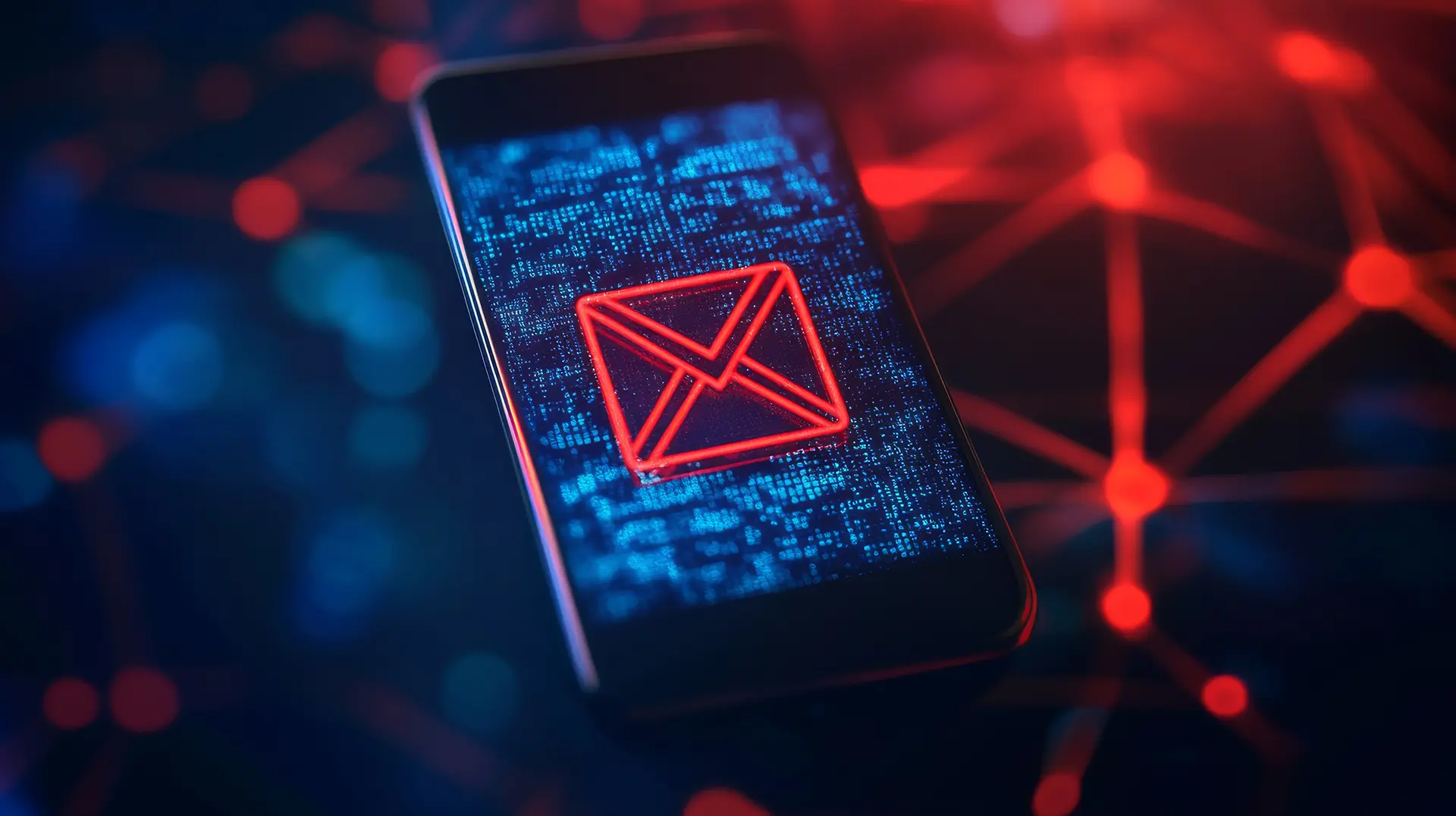Table of contents
- What is smishing
- How does a smishing attack work
- Real-life examples of smishing attacks
- Why is smishing dangerous
- How to protect yourself from smishing attacks
In recent years, the term “smishing” has gained increasing relevance in the world of cybercrime.
But what is smishing? The word is a combination of “SMS” and “phishing” and represents a form of phishing that uses text messages (short message service or SMS) to deceive users and obtain sensitive information.
So if you are looking for a translation for smishing, well there isn’t one.
This article will explore in detail what smishing means, how a smishing attack works, and how to protect yourself effectively.
What is smishing
Smishing is a fraudulent technique that exploits SMS messages to trick victims into providing confidential information such as credit card numbers, login credentials, and other sensitive data.
A “smishing attack” can be considered a variant of traditional phishing attacks, which typically use emails or fake websites to achieve their goals.
How does a smishing attack work
Through the sending of fraudulent SMS messages, cybercriminals attempt to trick victims into revealing personal and sensitive information. Here is an in-depth analysis of the stages and tactics used in smishing attacks:
Phase 1: Collecting phone numbers
The first step in a smishing attack is the collection of potential victims’ phone numbers. Cybercriminals can obtain these numbers in several ways:
- Data breach
Using databases stolen from data breaches of companies.
- Social media
Collecting publicly available numbers from social media profiles.
- Malware
Using malicious software to gather numbers from infected devices.
Phase 2: Creating the deceptive message
Once the phone numbers have been obtained, criminals create targeted and deceptive SMS messages. These messages are designed to appear legitimate and convincing. Some examples of smishing messages include:
- Bank notifications
Alerts informing the victim of problems with their bank account and requiring immediate action.
- Promotions and prizes
Messages offering enticing promotions or prizes in exchange for personal information.
- Security alerts
Fake security alerts that ask the victim to verify their identity or update their credentials.
Phase 3: Sending the message
The deceptive message is sent to the victim’s phone number. Thanks to the ability to customize the sender of the SMS, the message can appear to come from a trusted source such as a bank or a recognized organization. This technique increases the likelihood that the victim will take the message seriously and follow the provided instructions.
Phase 4: Victim interaction
When the victim receives the message, they may react in various ways. Some possible scenarios include:
- Clicking on a link
The message may contain a link to a fraudulent website that mimics a legitimate site. Once on the site, the victim is asked to enter personal information such as login credentials or credit card numbers.
- Responding to the message
The victim may respond directly to the message, providing the sensitive information requested in the text.
- Calling a phone number
Some smishing messages include a phone number to call. When the victim calls, they are tricked into revealing personal information through fake customer support.
Phase 5: Collecting and using the information
Once the sensitive information has been collected, cybercriminals use it for various fraudulent purposes, including:
- Identity theft
Using the personal information to steal the victim’s identity.
- Financial fraud
Accessing and emptying the victim’s bank accounts or using credit card numbers for unauthorized purchases.
- Selling the information
Selling the collected information on the dark web to other criminals.

Real-life examples of smishing attacks
To better understand how smishing attacks work, let’s look at some real-life examples:
- Fake bank update
A message that appears to come from your bank, asking you to click on a link to update your security information. Once clicked, a web page that looks like the bank’s site opens, where you are asked to enter your login credentials.
- Prize winning
An SMS announcing a lottery or contest win, asking for credit card details to pay for prize taxes.
- Shipping notification
A message informing you of an incoming package and requesting confirmation of personal information through a link.
Why is smishing dangerous
Smishing is particularly insidious because SMS messages are generally perceived as more secure than emails, and mobile devices tend to have smaller screens, making it difficult to identify suspicious links or properly analyze the sender. Additionally, since SMS messages arrive directly at the victim’s phone number, there is a greater sense of urgency and authenticity.
How to protect yourself from smishing attacks
Protecting yourself from smishing attacks requires a combination of awareness and preventive measures. Here are some suggestions:
- Doubt and verify
Do not blindly trust received messages. Always verify the authenticity of the sender through official channels.
- Never provide personal information via SMS
Legitimate institutions will never ask for sensitive data via text messages.
- Verify the origin of the message
If you receive a suspicious message, contact the entity that appears to have sent it using an official channel.
- Do not click on suspicious links
Avoid clicking on links contained in unsolicited SMS messages.
- Use mobile security solutions
Install antivirus and anti-malware applications on your mobile device to protect yourself from smishing attempts.
- Report suspicious messages
Inform your mobile operator and the relevant authorities about any smishing attempts you receive.
FAQ
- What is smishing?
Smishing is a form of phishing that uses SMS messages to deceive victims and obtain sensitive information. - How does a smishing attack work?
A smishing attack involves sending a deceptive SMS message that invites the victim to provide personal information or click on a fraudulent link. - What are the signs of a smishing message?
Signs include requests for personal information, suspicious links, and messages that create a sense of urgency or fear. - How can I protect myself from smishing?
Do not provide personal information via SMS, verify the origin of messages, do not click on suspicious links, use mobile security solutions, and report suspicious messages. - What should I do if I receive a smishing message?
Avoid responding, do not click on any links, and report the message to your mobile operator and the relevant authorities. - Why is smishing dangerous?
Smishing is dangerous because it exploits the perception of SMS security and the difficulty of verifying links on mobile devices. - What information do smishing attacks seek?
Smishing attacks seek sensitive information such as credit card numbers, login credentials, and other personal information. - Is smishing common?
Yes, smishing has become increasingly common with the rise of mobile device usage and SMS communication. - What are some examples of smishing attacks?
Examples include messages that simulate banking communications, false promotional offers, and fraudulent security alerts. - What is the difference between smishing and phishing?
Phishing primarily uses emails and websites to deceive victims, while smishing uses SMS messages.

